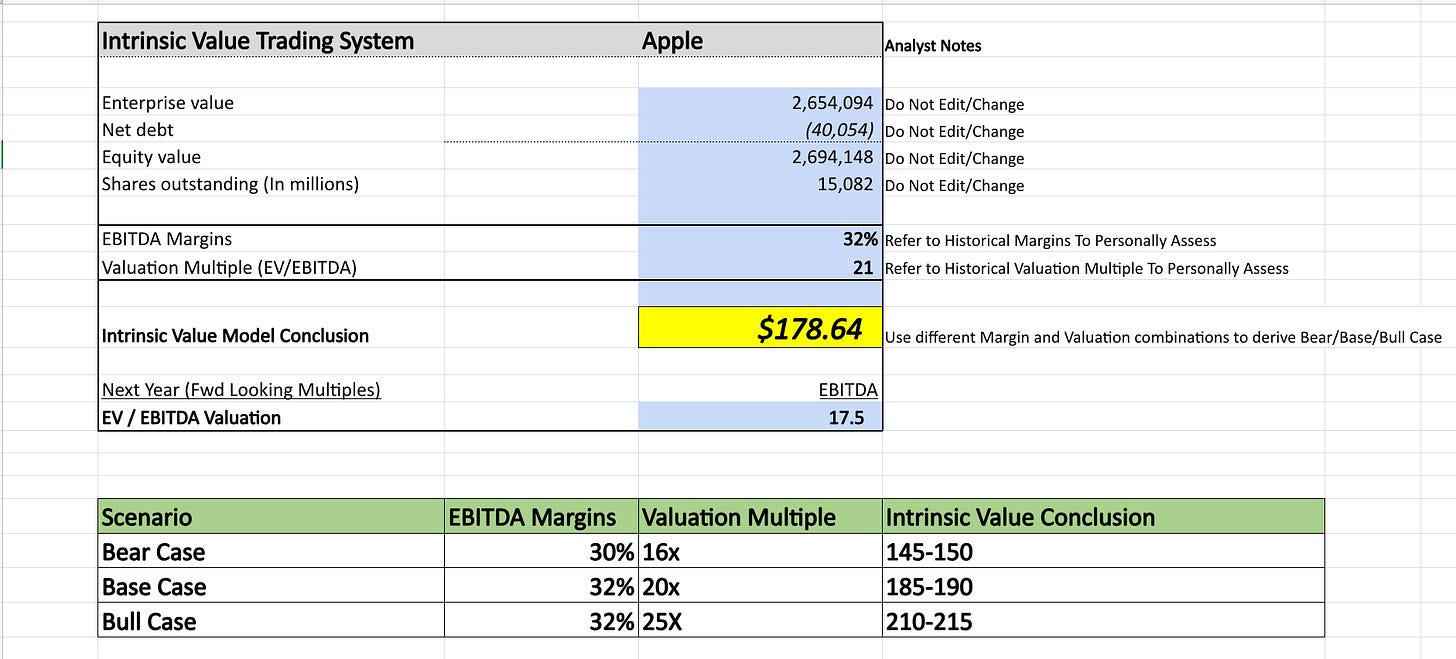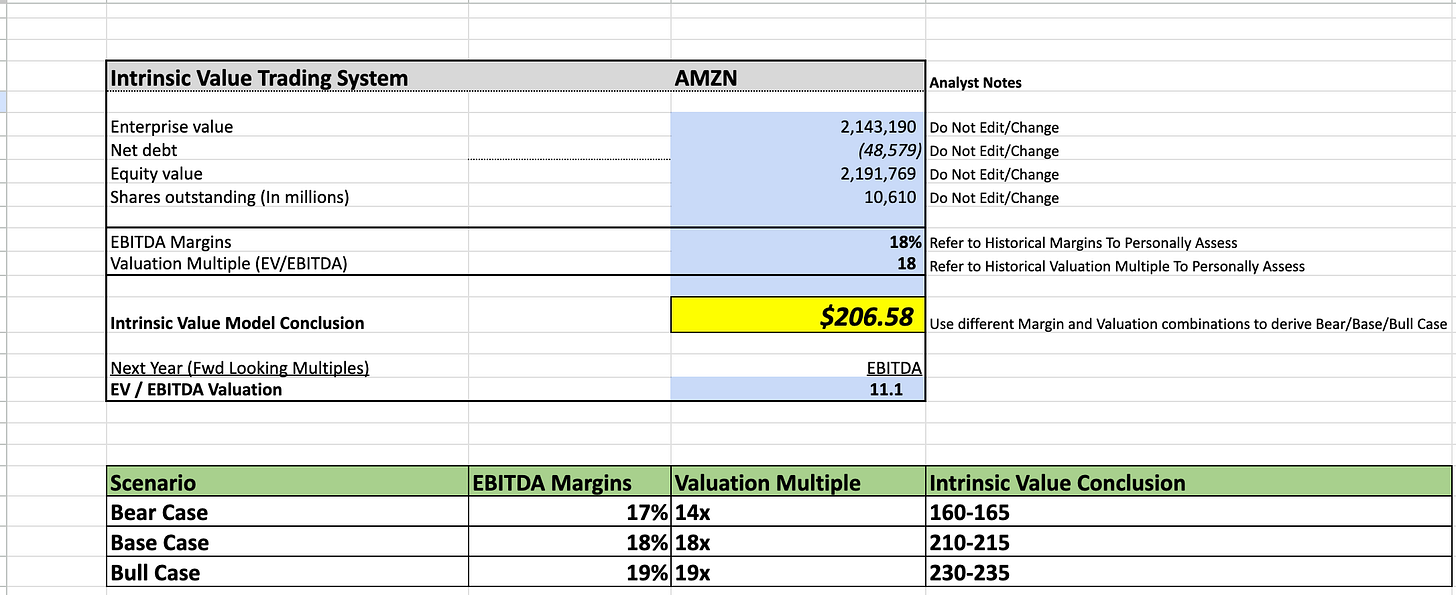Why the DCF Model can be a powerful friend in Setting Expectations
Before I get into this note, I want to address one looming question that investors may have, and it’s “Did the market top out this week and are we about to enter a massive correction?”
My short-answer is Unlikely. However, the upside is now also capped. And we likely enter Range-Bound Trading. Below, I explain why via DCF Modeling.
Folks -
This past week was a prime example as to the foreshadowing power behind DCF Modeling.
We had an event heavy week with 4 Mega Caps reporting earnings - 2 of which skyrocketed (Meta/Msft) and 2 of which that fell a bit behind (Amzn/Apple).
Let’s look at examples Amazon and Apple’s DCF Conclusions which have remained constant leading up to this quarter (updates will be provided for Members this coming week). Both great companies.
Leading up to this earnings season - Notice below that our DCF Bull Case for Apple was 210-215. Notice that the Bull Case for Amazon was 230-235.
If Apple and Amazon reported something blockbuster, these levels would have been too conservative and they would have sliced higher and entered a new upside region.
Their earnings were solid - given that their results were relatively in-line with Street expectations BUT their valuation was at Bull Case, the earnings report was the perfect catalyst to reset the stock’s trading range.
Also, notice that upon an earnings selloff in Amazon and Apple, the selloff wasn’t “catastrophic” (like a down -20-25% type of event).
The selloff merely brought them back to….the upper tier of the Base Case.
That’s the reason the stocks revisited that area. It’s not by accident. It also can’t be fully explained by technical analysis.
Now…noticing that valuations were a bit rich, we issued a warning on Small Caps.
If some of the Mega Caps were this richly valued ahead of earnings, how do you think the Small Caps would fare if the market pulls back just a bit?
Poorly, I would say. The Russell 2000 can be and will be the biggest turd in the market if sentiment gets weak.
If someone is bearish on the S&P 500, should they be shorting the SPX? No definitely not.
If one is bearish on S&P 500 and Nasdaq, go unleash Bear Mode on the biggest turd in the market: the Russell 2000.
See this note here before all of Russell’s turdish behavior unfolded (note now made public)
How often will I use language this strong and say this is a swing top?
Not often.
Russell down -5% since. That’s HALF an institutional correction level, in 2 days.
I make NO comment on what happens to Russell next.
But I have some good news for the good folks and it’s this: while I do think the Russell 2000 will struggle and need a bailout from the Fed, I don’t think it’s “over” for the S&P 500.
Based on my understanding of DCF Values of the most important stocks that determine whether the market should go, I do not have compelling evidence that the market will go straight down from here.
For instance, just in the two screenshots above, with Amazon and Apple revisiting Base Case, a meaningful bit of downside was priced in this past week. These two companies are 10% of the S&P 500. 10% of the index has been “de-risked” and re-calibrated.
Can we keep falling? Yeah sure, anything can happen.
However, to go from Bull Case to Bear Case in a very short period of time can only happen if there is a massive shift in the underlying fundamentals.
We’ll continue to monitor this closely. In our opinion, a number of opportunities have now opened up with better risk/reward after this week’s selloff.
Updated DCF models conclusions and valuation assumptions for Big Tech which have reported earnings will be available for viewing inside the Discord once the valuation updates are finished early this week. Conclusion tables will be sent out to the premium Substack list when ready.
Advanced Access: Access to view DCF models directly, view execution structuring, and Journal of Backtested Statistics on Discord (now a separate platform).



